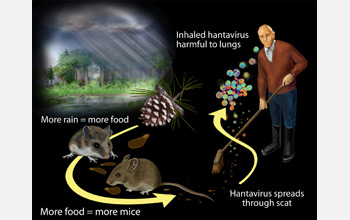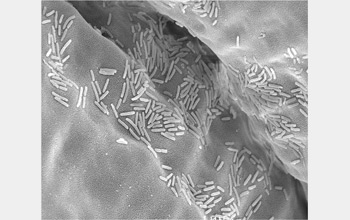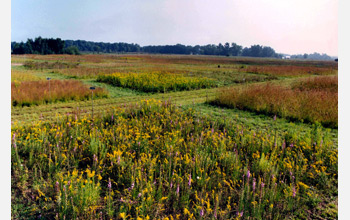All Images
News Release 10-227
Biodiversity Loss: Detrimental to Your Health
Infectious diseases on the rise as species disappear
This material is available primarily for archival purposes. Telephone numbers or other contact information may be out of date; please see current contact information at media contacts.

Infectious disease transmission links disease vectors, disease hosts and human habitations.
Credit: Nicolle Rager-Fuller, National Science Foundation
Download the high-resolution JPG version of the image. (79 KB)
Use your mouse to right-click (Mac users may need to Ctrl-click) the link above and choose the option that will save the file or target to your computer.
In fragmented forests, biodiversity declines, leading to infectious diseases like Lyme disease.
Credit: Nicolle Rager-Fuller

Contact with rodents and their waste puts humans at risk for exposure to hantavirus.
Credit: Zina Deretsky, National Science Foundation
Download the high-resolution JPG version of the image. (276 KB)
Use your mouse to right-click (Mac users may need to Ctrl-click) the link above and choose the option that will save the file or target to your computer.

Human babies begin to accumulate a microbial community when born; by adults, 90 percent of their cells will be microbes. This diversity of microbes can play an important role in preventing disease.
Credit: L. Belden
Download the high-resolution JPG version of the image. (80 KB)
Use your mouse to right-click (Mac users may need to Ctrl-click) the link above and choose the option that will save the file or target to your computer.

Higher microbial diversity in the guts of locusts prevents colonization by pathogens.
Credit: R.J. Dillon
Download the high-resolution JPG version of the image. (260 KB)
Use your mouse to right-click (Mac users may need to Ctrl-click) the link above and choose the option that will save the file or target to your computer.

Sowing research fields in Cedar Creek, Minn., with diverse seeds reduces fungal pathogens.
Credit: NSF Cedar Creek Long-Term Ecological Research Site
Download the high-resolution JPG version of the image. (4.5 MB)
Use your mouse to right-click (Mac users may need to Ctrl-click) the link above and choose the option that will save the file or target to your computer.
